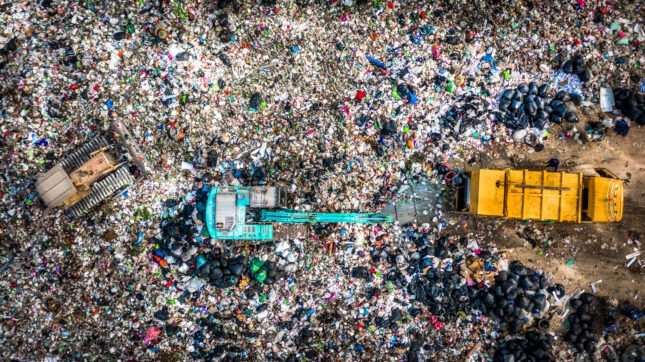-
Is Peace Enough? Why Sustainability Requires More Than Stability
July 15, 2025 By Richard Marcantonio
Around the world, conflict and environmental risks are on the rise – and they’re often connected in complex ways. In the past five years alone, the number of global conflicts has doubled. At the same time, human activity is pushing the planet beyond the ‘safe operating space’, increasing the risk of instability.
Researchers studying the links between conflict and environmental change have found that war and violence almost always harm the environment. But the reverse connection – whether environmental stress leads to conflict – is much harder to pin down. That’s because political systems, local institutions, and social dynamics often shape how environmental pressures play out.
Findings from recent studies suggest that sustainability and peace are positively correlated. In other words, the results suggest that peace and sustainability go hand in hand. If true, pursuing one could help achieve the other. But what if it’s not that simple?
In our study recent study, we examined this relationship more closely using three basic measures of ecological sustainability (carbon emissions per capita; ecological footprint; and material footprint) alongside two measures of peace (the Global Peace Index and the Positive Peace Index). What we found challenges the idea of a straightforward link. In fact, the relationship between sustainability and peace may be more complicated – and even counterintuitive—than previously thought.
Surprisingly, we found that the most peaceful countries – those with little or no internal conflict – tend to be the most environmentally unsustainable. These nations, on average, have some of the highest ecological footprints. We also uncovered important links between a country’s ecological vulnerability, the types of conflict they engage in (whether between or within states), and their overall resource use.
Given these divergent findings, what is happening? And what are the implications for how we think about peace and security?
The main discrepancy comes down to how we define and measure sustainability. A key issue lies in whether we focus on what a country produces or what it consumes – a distinction that can lead to very different conclusions. This same tension shows up in how progress on the UN Sustainable Development Goals is measured, and it reflects broader challenges in accounting for sustainability in a comprehensive way.
The US, DRC, and Switzerland show that peace doesn’t guarantee sustainability
To better understand the complex relationship between peace and sustainability, our study looked at three countries with very different profiles: the United States, the Democratic Republic of Congo (DRC), and Switzerland. Each offers insight into how ecological impact and levels of peace can diverge in surprising ways.
In 2015, the United States was not experiencing conflict within its borders, but was deeply engaged in military operations abroad, including Afghanistan, Iraq, Syria. Despite its internal stability, the US had a large environmental footprint. Its consumption of energy and materials, along with its per capita carbon emissions, far exceeded global sustainability thresholds. At the same time, it ranked relatively high – 19th out of 163 countries – in the Positive Peace Index, reflecting strong institutions and a stable society.
The DRC, by contrast, was grappling with internal conflict that resulted in 384 deaths that year. Yet, environmentally, it was among the most sustainable countries in the world. Its ecological and material footprints, as well as its per capita carbon emissions, were all well below global thresholds. Still, it ranked near the bottom of the Positive Peace Index (156 out of 162). In other words, it experienced a relatively high level of intrastate conflict yet was well within its sustainable ecological footprint.
Switzerland presents a third case. In 2015, the country did not engage in external conflicts, and, like the US, it enjoyed a peaceful domestic environment. It ranked very high on the Positive Peace Index – third overall. Yet it, too, had a high environmental impact, with consumption levels far beyond sustainable limits.
Together, these three examples show that peace and sustainability do not always go hand in hand. The US and Switzerland demonstrate that a country can be peaceful while still being ecologically unsustainable. Meanwhile, the DRC shows that even countries with minimal environmental impact can suffer from deep instability. One reason for this pattern may lie in the nature of the conflicts themselves. Participating in conflicts abroad often demands large amounts of energy and resources, contributing to a country’s ecological burden. By contrast, countries experiencing internal conflict are often poorer and consumer fewer resources overall.
Costa Rica shows the potential for peace and sustainability to work in tandem
Our findings suggest that the relationship between ecological sustainability and peace is not inherently positive or automatic. In fact, in many cases, the two seem to move in opposite directions. But this doesn’t have to be the case.
Costa Rica offers a hopeful counterexample. In 2015, it was close to attaining ecological sustainability in all three measures. It was not involved in any domestic or international conflict, and notably, it is one of only a handful of countries without a standing military. It also ranked in the top quarter of countries on the Positive Peace Index, suggesting that it has built both social stability and environmental responsibility into its national model.
Obviously, Costa Rica is an outlier – and most countries cannot follow the same path they have, with ecotourism a key part of their economy. But its example does raise important questions about how countries can balance peace and sustainability in ways that are more durable.
Ultimately, how we measure, think about, and pursue both sustainability and peace matters. Results from previous studies and our findings make clear that historical paths to peace through development are complicated. Historical models of development and conflict resolution have often relied on patterns of economic growth that come with high environmental costs. Our findings, along with those from other recent studies, suggest that the trodden paths are not likely to succeed in the long run – especially if we hope to address rising global conflict and worsening ecological crises. Moving forward in the simultaneous pursuit of peace and sustainability, a necessary pursuit given the growing complexity of the challenges we face, requires a comprehensive approach to measuring both to avoid creating tradeoffs between the two.
Richard Marcantonio is an Assistant Professor of Environment, Peace, and Global Affairs at the Kroc Institute for International Peace Studies in the Keough School of Global Affairs at the University of Notre Dame. He is the author of “Environmental Violence: In the Earth System and the Human Niche” (2022; Cambridge University Press), co-author of the textbook “Environmental Management: Concepts and Practical Skills” (2022; Cambridge University Press), and lead co-editor (with John Paul Lederach and Agustin Fuentes) of “Environmental Violence Explored” (2024; Cambridge University Press).
Sources: ACLED, Conflict and Environment Observatory, Earth System Governance, Foreign Policy, Global Footprint Network, International Resource Panel, Nature Sustainability, Science Advances, UCDP, United Nations, University of Leeds, University of Notre Dame, Vision of Humanity.
Photo Credit: Licensed by Adobe Stock
 A Publication of the Stimson Center.
A Publication of the Stimson Center.








